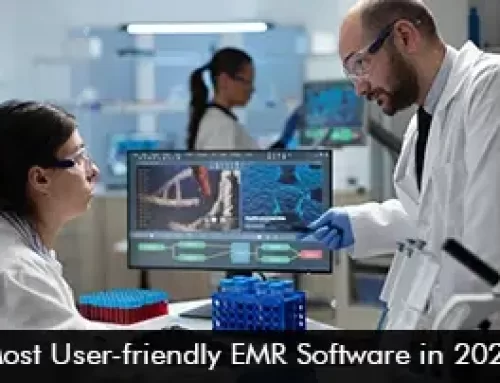Predictive analytics in Electronic Medical Records (EMR) Software is about using past and current patient information to get a sense of what might happen medically down the road. By tapping into machine learning and data mining, it can spot potential health dangers, guess how a disease might develop, and help put early treatment plans into action.
EMR Software holds a huge amount of patient data, both organized and not, and when you look at it the right way, it reveals useful insights that go way beyond just keeping records. The American Medical Association (AMA) says that using predictive analytics in healthcare can empower the decision-making of providers and make better use of resources in medical settings.
Benefits for Providers and Patients of EMR Software Predictive Analytics
Providers and patients both benefit from bringing predictive analytics into EHR Software. This technology helps healthcare professionals base their decisions on solid data, which ultimately leads to better patient results. One of the standout perks is risk stratification—figuring out which patients are more likely to face complications or need to be readmitted to the hospital.
This knowledge helps clinicians focus their care, especially for those managing chronic illnesses like diabetes or heart disease. Plus, the predictive tools within EMR Systems like Epic Systems can flag early warning signs like sepsis, drug interactions, or sudden health declines, making it possible to step in quickly and precisely. For patients, this translates to more tailored and proactive care, resulting in improved experiences and outcomes.
How Predictive Analytics is Used in the Real World
Healthcare systems in the U.S. are increasingly making use of predictive tools within their Electronic Medical Records (EMR) Software. For instance, hospitals are using predictive models to forecast how patients move through the system. This helps administrators manage bed space, staffing levels, and resources more efficiently.
Mental health providers can evaluate suicide risk using algorithms that examine clinical notes and records. In cancer departments, predictive analytics are being used to gauge how patients will respond to treatments by looking at genetic and clinical data. These examples show how EMR Software, when enhanced with advanced analytics, goes beyond just gathering data to actively improving healthcare.
Navigating the Future
It’s clear that predictive analytics holds incredible promise for EHR Software, but there are hurdles to overcome. Things like the quality of data, getting everyone on the same page with standards, and making different systems talk to each other often get in the way of these models working as well as they could.
Plus, many EMR systems still operate in silos, which limits how much useful insight we can get from predictive tools. We also have to grapple with important ethical questions about patient privacy and making sure the algorithms aren’t biased, to guarantee fairness and trust in AI predictions.
But the outlook is positive! With ongoing investment, stronger rules for managing data, and support from regulators, predictive analytics in EMR Software looks set to become a regular part of how healthcare works daily.







